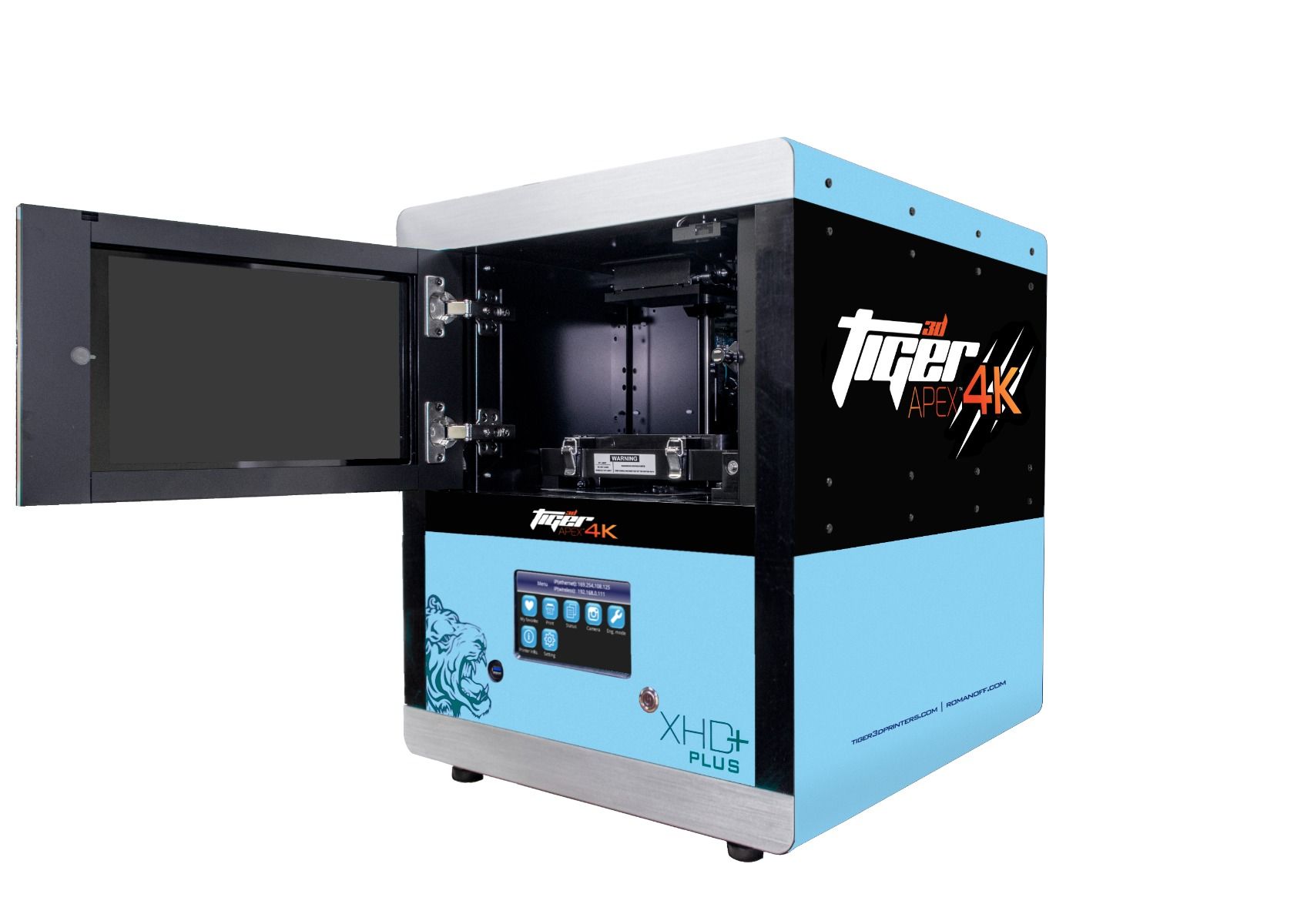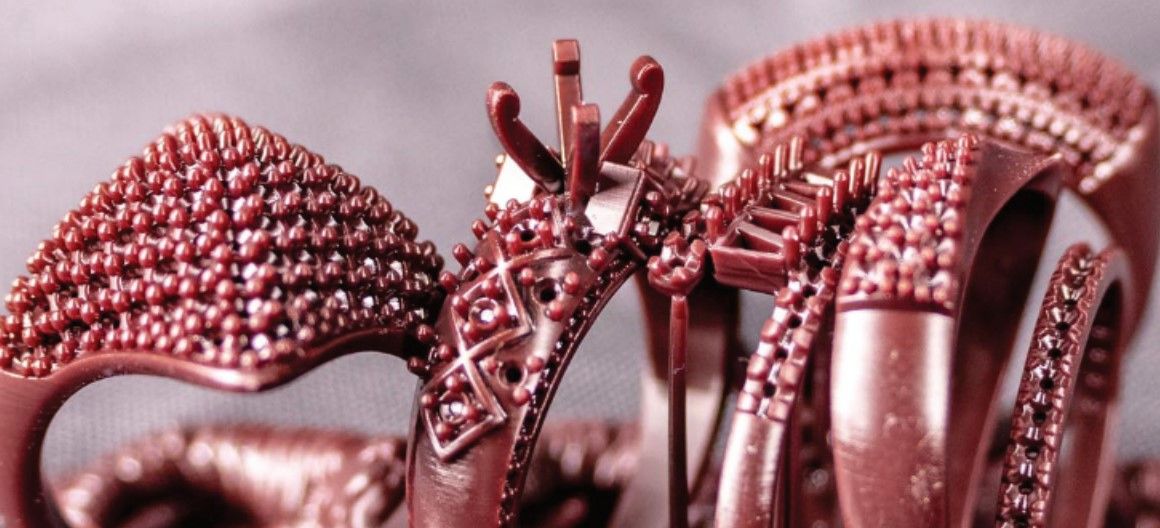Exploring the World of Jewelry 3D Printers
 In the world of jewelry, craftsmanship has always been synonymous with meticulous attention to detail, skilled artistry, and a profound understanding of materials.
In the world of jewelry, craftsmanship has always been synonymous with meticulous attention to detail, skilled artistry, and a profound understanding of materials. However, with the advent of technology, particularly 3D printing, a new era has dawned upon the jewelry industry. Jewelry 3D printers have emerged as a groundbreaking tool, revolutionizing the way designers create, manufacturers produce, and consumers adorn themselves with fine jewelry. In this blog, we explore the fascinating realm of jewelry 3D printers, exploring their capabilities, benefits, and the transformative impact they have had on the age-old craft of jewelry making.
Unveiling the Technology Behind Jewelry 3D Printers
At its core, a jewelry 3D printer operates on the principles of additive manufacturing. Unlike traditional subtractive methods that involve carving away material from a solid block, 3D printing builds objects layer by layer from digital designs. These printers utilize various materials ranging from wax to resin-based materials, enabling jewelers to create intricate designs with unparalleled precision.One of the key components of Jewelry 3D printing is the CAD (Computer-Aided Design) software. Designers utilize CAD software to craft intricate designs, manipulating shapes, sizes, and textures with ease. Once the design is finalized, it is translated into a digital file format compatible with the 3D printer.
The Advantages of Jewelry 3D Printing
Precision and Intricacy
Jewelry 3D printing offers unmatched precision and intricacy in design. Traditional manufacturing methods often have limitations when it comes to creating complex geometries or intricate details.With 3D printing, designers have the freedom to explore intricate patterns, filigree work, and textures that were once deemed too challenging or even impossible to achieve.
Customization and Personalization
One of the most significant advantages of jewelry 3D printing is its ability to cater to individual preferences through customization and personalization. Whether it's crafting a unique engagement ring or a personalized pendant, 3D printing allows jewelers to tailor designs to the specific tastes and preferences of their clients. This level of customization not only enhances the sentimental value of the jewelry but also fosters a deeper connection between the wearer and the piece.
Time and Cost Efficiency
Traditionally, crafting fine jewelry often involved labor-intensive processes that were both time-consuming and costly. Jewelry 3D printing streamlines production processes, significantly reducing lead times and minimizing material wastage. Furthermore, the ability to produce intricate designs with minimal manual intervention translates into cost savings for both manufacturers and consumers.Iterative Design Process
Another advantage of jewelry 3D printing is its facilitation of an iterative design process. Designers can rapidly prototype concepts, allowing for quick revisions and modifications. This iterative approach not only accelerates the design phase but also fosters innovation and experimentation, pushing the boundaries of traditional jewelry design.Applications of Jewelry 3D Printing
High-End Jewelry
Jewelry 3D printing has found its place in the creation of high-end, bespoke pieces. From ornate engagement rings to statement necklaces, 3D printing enables designers to bring their wildest imaginations to life, catering to the most discerning clientele.Fashion Jewelry
In addition to high-end jewelry, 3D printing has also made its mark in the realm of fashion jewelry. Designers can create bold, avant-garde pieces that push the boundaries of conventional design, appealing to fashion-forward consumers seeking unique accessories to complement their attire.Customized Accessories
Beyond traditional jewelry, 3D printing has paved the way for the creation of customized accessories such as cufflinks, tie pins, and brooches. These accessories serve as not only fashion statements but also as personalized tokens of style and sophistication.
Replication and Restoration
Jewelry 3D printing also plays a crucial role in replication and restoration. Whether it's recreating vintage pieces, restoring heirloom jewelry, or replicating lost components, 3D printing offers a non-invasive and precise solution, preserving the integrity of the original design while breathing new life into cherished pieces.Challenges and Future Outlook
While jewelry 3D printing holds immense promise, it is not without its challenges. One of the primary concerns is the quality of printed output, particularly in terms of surface finish and material properties. As technology continues to evolve, addressing these challenges will be paramount in further enhancing the adoption and acceptance of 3D printing within the jewelry industry.Looking ahead, the future of jewelry 3D printing appears bright and promising. Continued advancements in materials, printing techniques, and software capabilities will further democratize the process, making custom-designed jewelry accessible to a broader audience. Additionally, as sustainability becomes an increasingly important consideration, 3D printing's ability to minimize material wastage and energy consumption will position it as a more environmentally friendly alternative to traditional manufacturing methods.
In conclusion, jewelry 3D printers represent a paradigm shift in the age-old craft of jewelry making. From enabling unparalleled precision and customization to streamlining production processes and fostering innovation, these printers have redefined the possibilities within the jewelry industry. As technology continues to evolve and barriers are overcome, we can expect to witness a continued fusion of artistry and technology, ushering in a new era of creativity and expression in jewelry design.




Comments
Leave A Reply
Your email address will not be published.